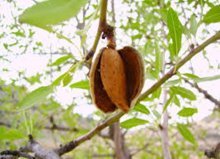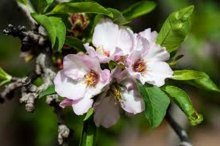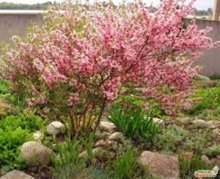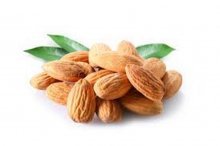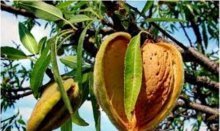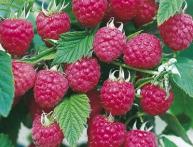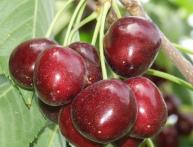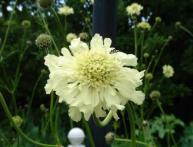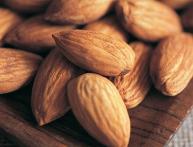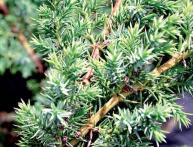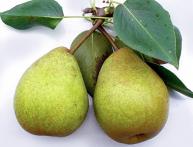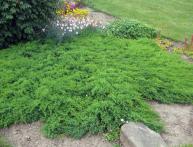Almond, what kind of tree is it, how to grow it and get fruit
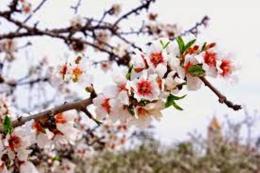
Almond – a popular food product with pleasant taste, enriched with a lot of useful substances. The plant itself is a medium-sized tree, 6 m high, belongs to the Plum genus, Rosaceae family.
Varieties of the bush type do not exceed 2 m. Despite the fact that everyone is accustomed to considering almonds a nut, according to botanical descriptions it is a stone fruit. It is grown on an industrial scale in many countries. Let's take a closer look at what kind of plant this is - almonds, is it very capricious, and is it possible to grow it in your summer cottage.
Content:
- Almond - what kind of plant is it, description and photo of the almond tree
- How almonds grow - let's talk about proper planting of seedlings
- Features of caring for common almonds
- Beneficial properties of almonds
Almond - what kind of plant is it, description and photo of the almond tree
Plant almond - This is a low-growing deciduous tree or bush, classified as a subgenus Almond. The crop has long been grown in Turkey, Iran, and Central Asian countries. The most commonly cultivated almond is the common almond, although there are more than 40 varieties. The lifespan of a tree reaches 100 years.
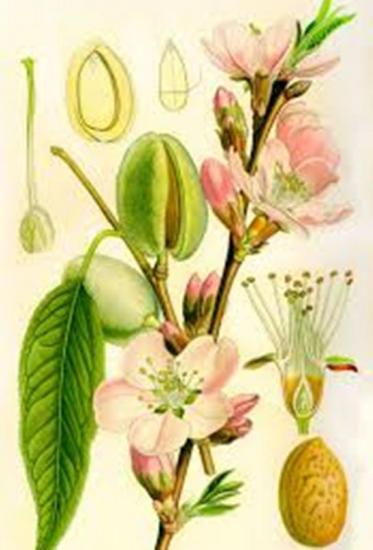
The plant has a powerful root system that protects against drought. The stems bear pointed lanceolate leaves.
The tree blooms in late March or early April, before the leaves bloom. The flowers are white or pale pink, with five petals.The plant begins to bear fruit in its fifth year.
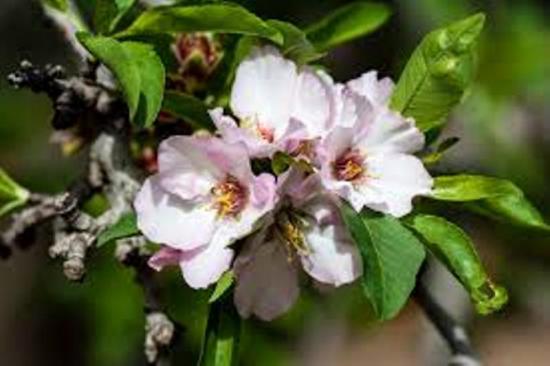
However, complete fruiting occurs no earlier than the tenth, and lasts 30-50 years. The fruits are a drupe with grooves in the skin. The weight of each is 1-5 g. Most people call almonds a nut.
A pleasant sweetish aroma emanates from flowering trees. For those who are planning to settle almond on your site, it should be taken into account that the plant needs cross-pollination. Several pollinating varieties are planted on the site. Bees are also needed for pollination. It is advisable to have 3-5 hives nearby.
The almond tree is famous not only for its tasty and healthy fruits. The plant stands out for its decorative qualities and will easily decorate any area, enliven and complement the green composition.
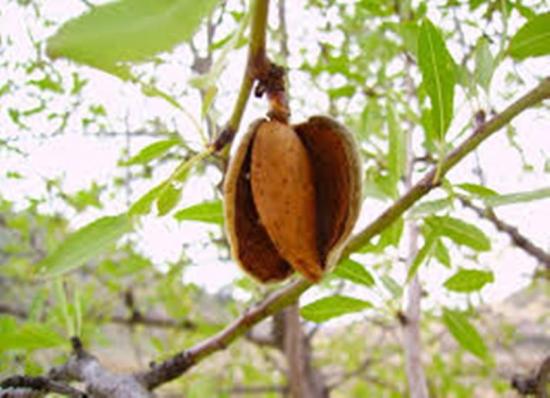
How almonds grow - let's talk about proper planting of seedlings
Professional gardeners know how to grow almond trees from the seed. For hobbyists, the most suitable method of propagation is planting seedlings. One-year-old specimens are best suited.
Almonds are planted in early spring or late autumn. According to the observations of many gardeners seedlings, rooted in the autumn season, take root better.
Selecting a location
For an almond tree, choose a location with plenty of sunlight. Light partial shade is also suitable. But almonds do not like drafts and strong winds.
Despite the fact that the plant tolerates temperatures down to -25 C, severe frosts can destroy it. If possible, give preference to southern areas, protected from cold northern winds.
Priming
Loose, nutritious chernozems, loamy and sandy slightly acidic soils are best suited for cultivation. priming. The presence of lime is welcome.Almonds do not grow well in acidic, salty and clayey soils.
Swampy lowlands and areas where groundwater runs close to the surface are not suitable for planting.
Preparation
In the fall, two weeks before planting, dig a hole 60 by 60 cm. A space of 3-5 m is left between the seedlings. Drainage is laid at the bottom of the hole - brick chips or crushed stone. Mix leaf soil, sand, humus (3:1:2) and pour into the recesses.
You should also add several kilograms of manure and 500 g of superphosphate. Planting begins after 12-14 days, when the soil has settled. If the soil in the area is acidic, be sure to add lime.
Landing
Planting almond seedlings is not much different from planting fruit trees. A support is placed in the middle where the planted plant will be tied. The level of the column above the ground should be approximately 0.5 m. The seedling is placed in the center of the recess, after which the soil is compacted and generously watered water.
Please note that if you postpone planting to spring, the hole should be prepared in the fall. Drainage, fertile soil and fertilizers are laid before wintering. With the arrival of spring, the seedling is planted in the standard way.
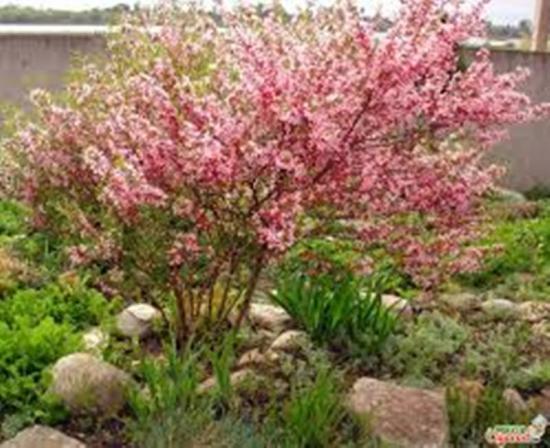
Features of caring for common almonds
If you decide to grow almonds on your property or garden, take care of proper care. Proper maintenance will make it possible to get a good harvest.
Loosening
One of the important conditions for a healthy almond tree is loose soil. During the growing season, loosening is carried out 4-5 times. Pay attention to the tree trunk circle. Don't forget to get rid of weed.
Watering
Almonds are among the crops that tolerate drought well.However, it is better not to abuse this property and carry out timely watering. Young seedlings are most sensitive to lack of moisture.
They need hydration every 1.5-2 weeks. The greater the concentration of sand in the soil, the more often an adult plant needs irrigation. Water is added after the soil has dried a few centimeters deep. Excessive moisture can lead to rot.
Fertilizer application
Nitrogenous fertilizers are suitable for almond trees. Prepare the following solution: dilute 20 g in a bucket of water saltpeter. In autumn, it is useful to pamper the plant with natural fertilizers. A kilogram of manure is placed under each trunk. Superphosphates are also used. Ash is added to the soil every year.
Some gardeners consider it sufficient to use Fitoverm 1-2 times a year, and also leave fallen leaves under the tree. It is useful to sprinkle the area near the trunk with mowed grass. In this case, additional fertilizers may not be required at all.
Trimming
Stone fruits traditionally trimmed in autumn or early winter. Remove dried, damaged and old shoots.
Disease Prevention
To avoid pest attacks, preventive treatment is carried out. In early spring, before the buds appear, the trees are irrigated with Bordeaux mixture. This will prevent overwintering parasites from entering. After the leaves fall off, spraying is repeated.
The best part is harvesting from a mature tree. The fruits are ready after the shell darkens. The bones should come off easily. The harvest is dried and then stored.
Beneficial properties of almonds
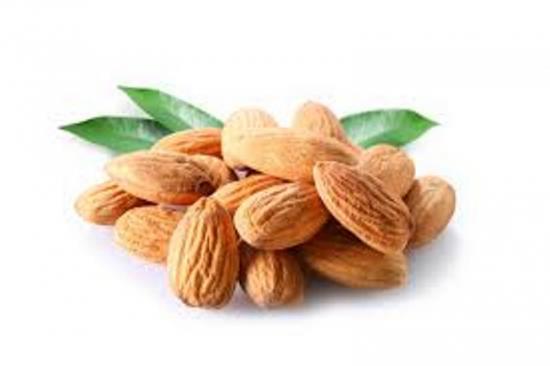
The benefits of almonds are undeniable and have long been proven. The main advantage is the rich content of fatty oil (up to 70%).
Almond – a valuable food product and a storehouse of nutrients:
- Vitamins: A, group B, ascorbic, folic and pantothenic acid, E, niacin
- Minerals and trace elements: potassium, magnesium, sodium, zinc, iodine, calcium, iron
- The content of high-quality, easily digestible protein reaches 30%.
Valuable components have a beneficial effect on the functioning of internal organs, the hematopoietic system, and mental activity. Regular consumption of the product improves visual acuity, removes toxins and increases fertility.
Consumption of almonds is recommended for asthmatics, people with peptic ulcers, and pleurisy. Scientifically proven effectiveness against ARVI. The rich composition of the nuclei stimulates the body's resistance to pathological agents.
It turns out that the peel of almond seeds is no less useful. Tinctures are made from it and used in the production of wines and spirits.
Almonds are eaten raw and roasted, salted and coated in sugar. The seeds are widely used for making confectionery, cakes, sweets, desserts, marzipans, and fine liqueurs. Almonds can give a dish a subtle aroma and an unforgettable taste.
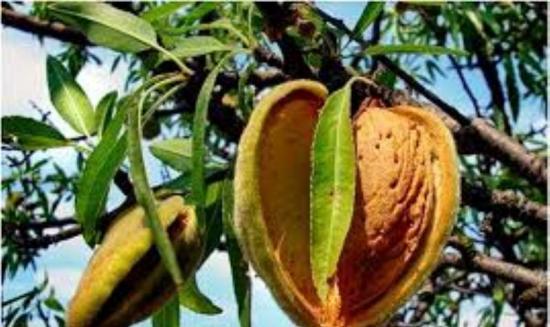
We should not forget that almonds have a high calorie content - 650 kcal per 100 g. Consumption should be moderate, especially for overweight people.
The almond tree is a plant that produces fruits with excellent taste and healing qualities. The plant is easy to grow yourself. Take care of your garden and be rewarded with a harvest of healthy almond kernels.
We invite you to watch a video about the beneficial and healing properties of almonds:

